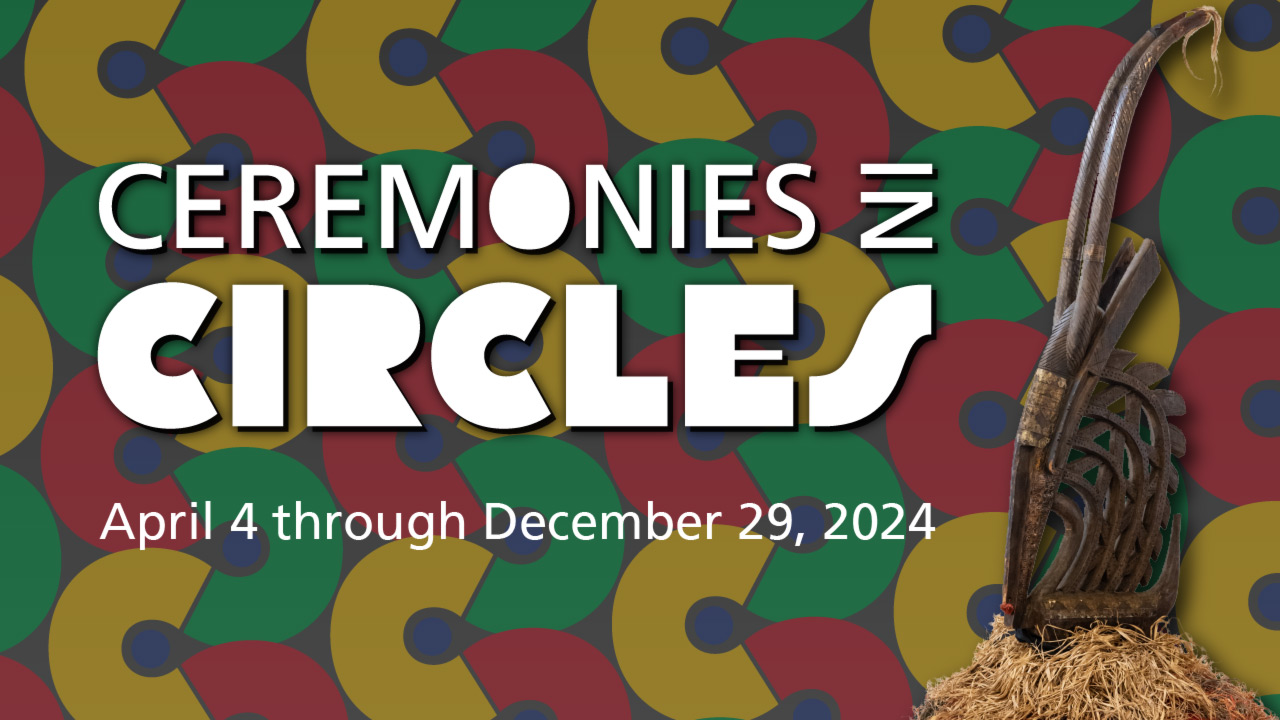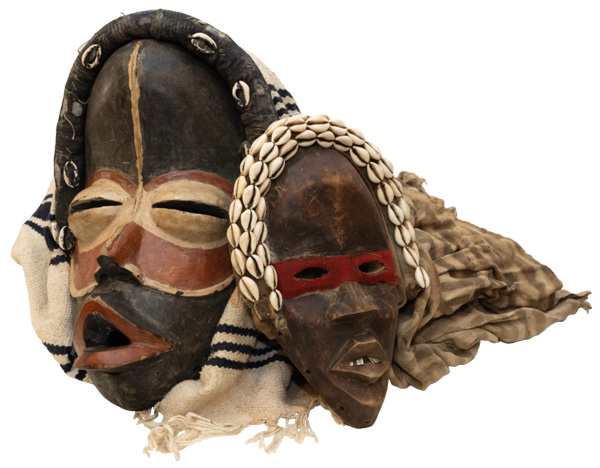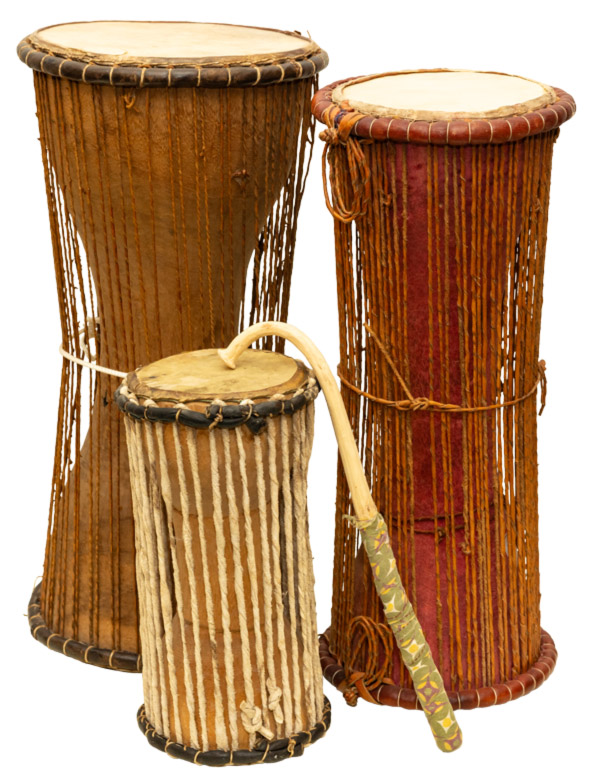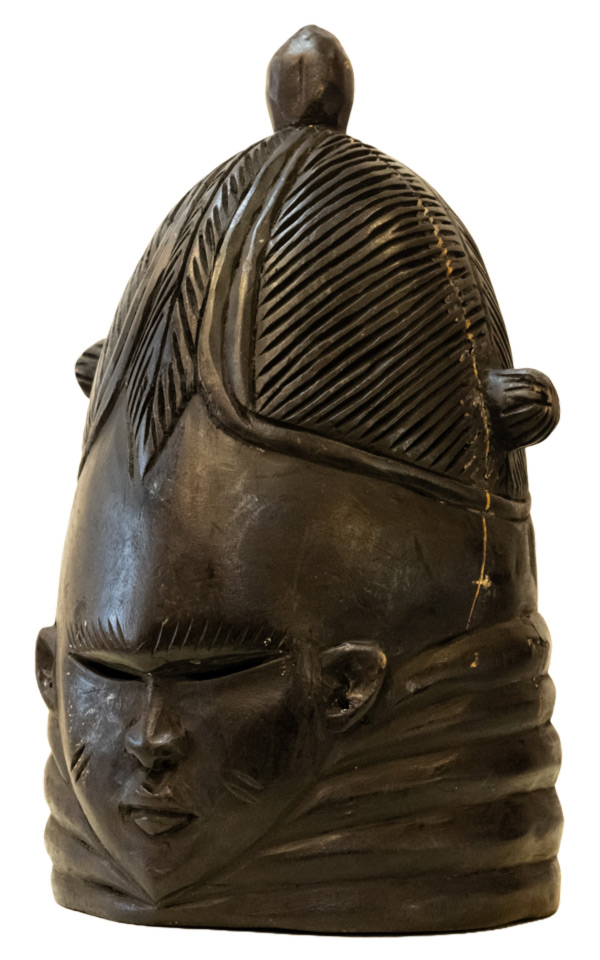
Ceremonies in Circles
April 4 through December 29, 2024
In the Down Jersey Folklife Center
Interpreting traditional West African masks, garments, woodcarvings, and ceremonial objects used in special rituals and community celebrations.


Visit the Folklife Center to explore traditional masks, garments, and objects related to special rituals and community celebrations of West African cultures. Most featured artworks were created by artists in our region, with others acquired from private collections. The exhibit provides insights into the West African traditions of masquerade as well as artistic interpretations of old wisdom and new meanings.
Highlighted in the exhibit are artworks by the renowned mask makers Ira L. Bond, Richard Robinson Jr., Boubacar Diabete, Moussa Diabete, Arthur Driscoll, and Melvin Deal. Their masks and costumes have been in continuous use by the U.S.-based African Masquerade Society and the Malidelphia Ensemble, whose members reside primarily in Philadelphia and New Jersey. The works of the African and African-American mask makers in our area visualize the West African masquerade through symbolism, aesthetics, and artistry to translate important messages to the community.
The messages of the West African masquerade are ritual and cultural expressions of universal values connecting people to their ancestors and cultural heritage, interpreting concerns for the protection of land and love for one another. Each mask tells a story, told in a ritual of festive context. This story involves not only the mask and the costume but also the music, dance, and ritual behaviors. Discover rich stories symbolized through West African masks and costumes such as Bambara Mali N’Tomo and Tyi Wara masks, Dan Deangle and Guro Zaouli Ivory Coast masks, Dogon Mali Kanaga, Tingetange and Spirit masks, and Mende Sande Siera Leone masks among others.

Special displays feature artworks by the internationally recognized master drummer, dancer, and sculptor Maxwell Kofi Donkor. Images of his native Ghana are interpreted in his relief sculptures and ceramics to depict rituals and celebrations of the Asante people. His artworks bring viewers another perspective of West African traditions, worldviews, and way of life.
All exhibited artworks aim to provide deep experiences with unique visualizations of universal human values, joys, fears, and hopes. They are meant to inspire a meaningful dialogue about the significance of cultural heritage in the multicultural landscape of our region. History, cultures, and everyday life are all part of the exhibit’s quest—a quest for understanding and possibly appreciating who “we” are and who “they” are —a quest for individual relevancy in a sea of conflicting social values. In other words, it is a quest for understanding humanity through creativity, spirituality, and art.
The Down Jersey Folklife Center is a co-sponsored project of the New Jersey State Council on the Arts and WheatonArts, with additional support from the National Endowment for the Arts. The Ceremonies in Circles exhibit includes partnership support from Malidelphia Performing Arts, Raíces Culturales Latinoamericanas, and the New Jersey Historical Commission.


